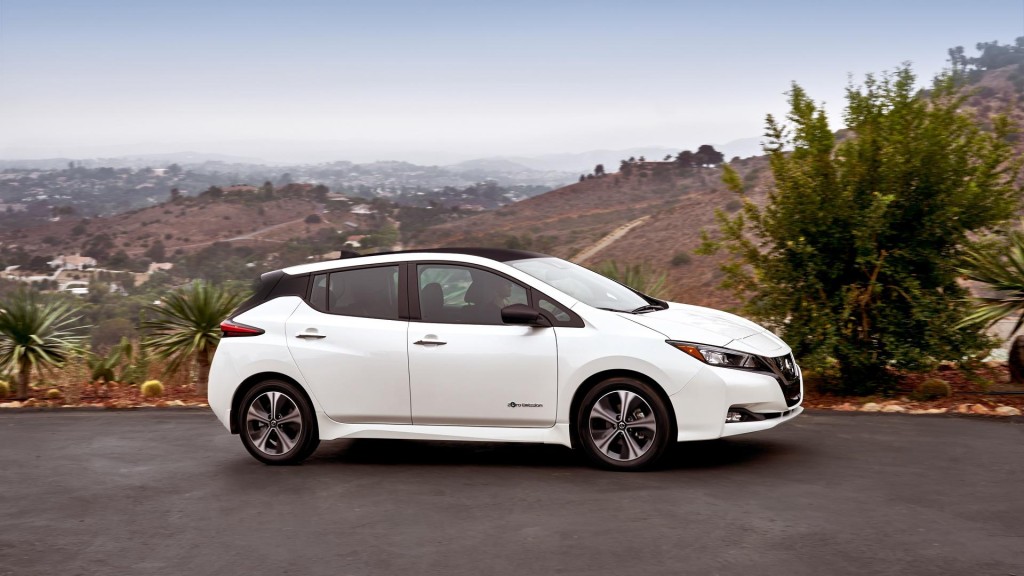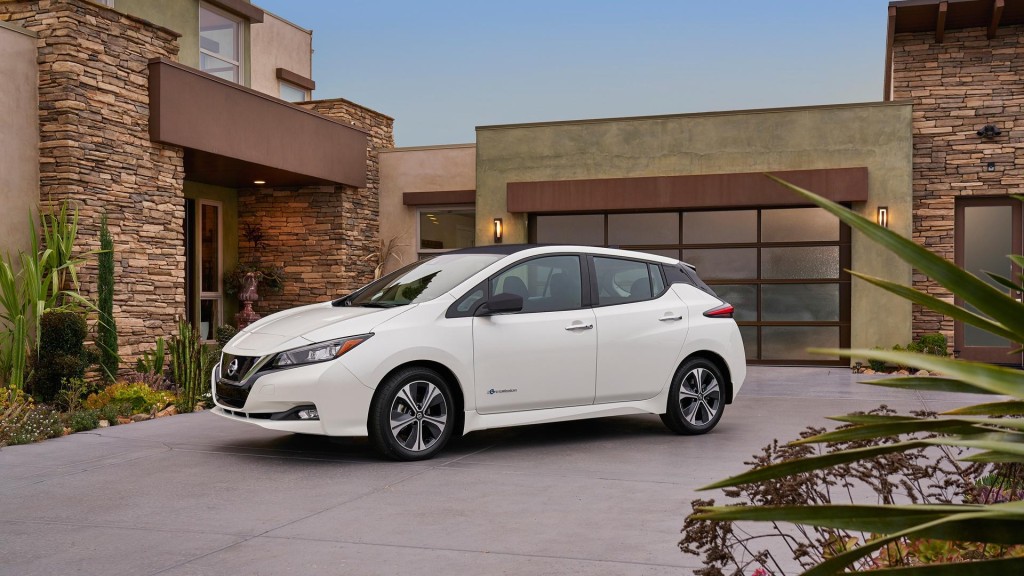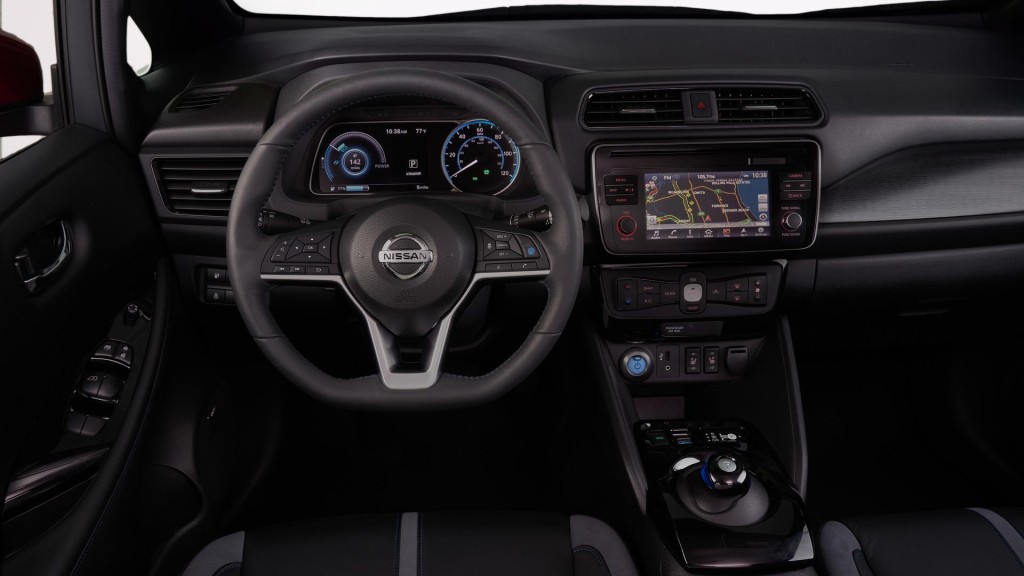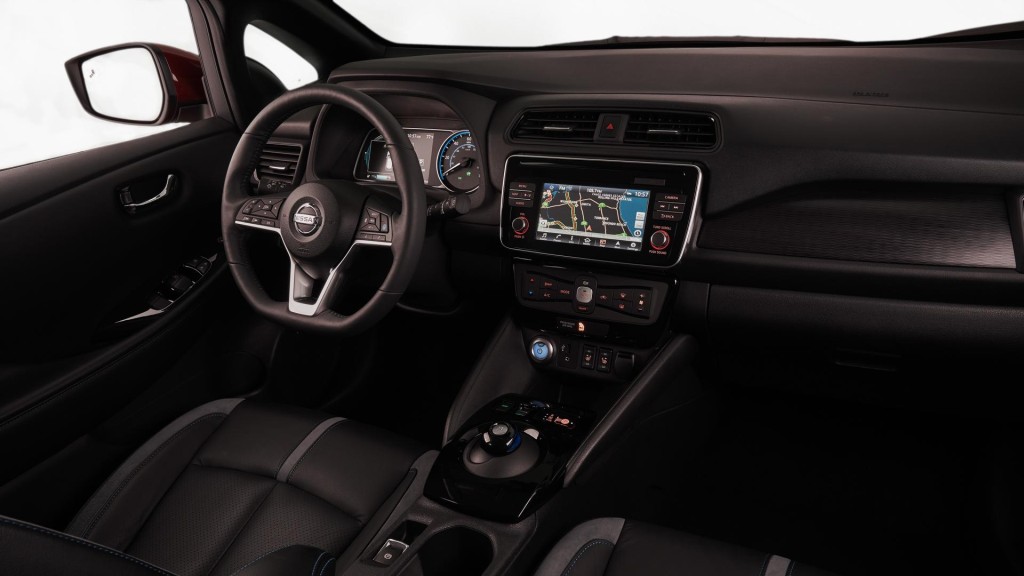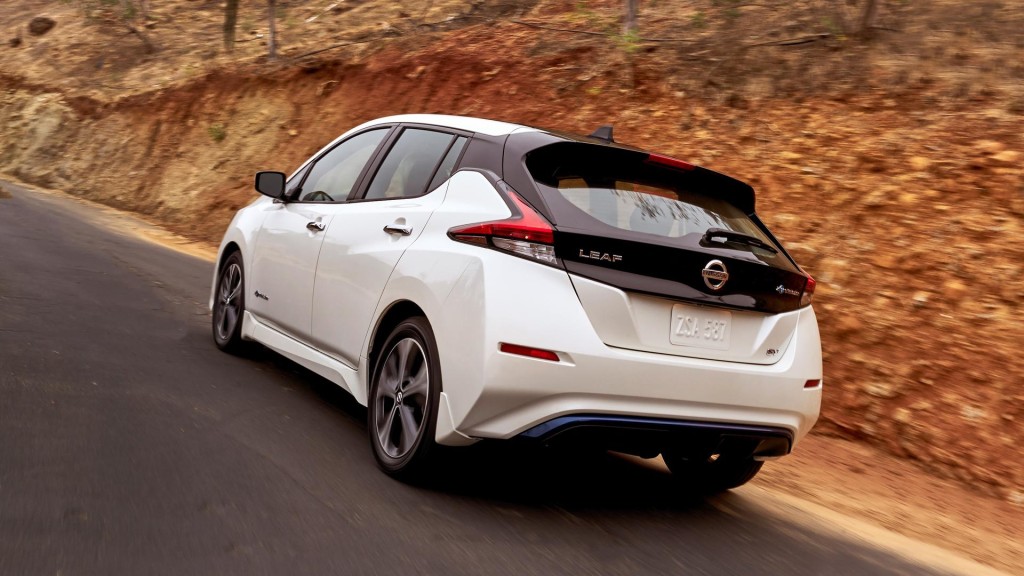The Nissan Leaf is considered as one of the most successful mass-market electric vehicles today. Since it was introduced in 2010, the innovative electric vehicle has sold more than 250,000 copies. Nissan Motor Company today follows up this success with a bolder and more cutting-edge second-generation Leaf.
Taking its cue from the IDS Concept that first broke cover at the 2015 Tokyo Motor Show, the car flaunts a bolder design with the signature V-Motion grille with a clear blue 3D pattern, boomerang-shaped headlights, and a floating contrasting roofline that all combine to give it a futuristic touch with the trademark Nissan vibe.
The sleek profile hides a wealth of comfort, connectivity, and tech features that bring the car way into the future of mobility. Just like the outside, the cabin is given a space-age touch with cool blue interior schemes and lighting, an instrument cluster and panel that puts all the information right within the driver’s line of sight, and bits like a start-up movie that give one a brief orientation on how to drive an electric car.
What really sets the Nissan Leaf apart from other cars on the road is what’s under the hood—or in this case, underneath all that metal. The electric motor, dubbed Nissan Intelligent Power, gives the car more output with a longer driving range. Part of Nissan’s Intelligent Mobility, Intelligent Power delivers 147hp and 320Nm of torque almost instantaneously—just as an electric vehicle should. More importantly, it increases driving range and pegs it at roughly 400kms.
The new Nissan Leaf is also touted to be a very safe and easy to drive vehicle. Thanks to Nissan Intelligent Driving, the car comes with various driver aids and safety systems to help protect occupants and other road users. ProPilot, for instance, controls the steering, brakes, throttle, and other functions at speeds between 30-100kph. This gives the car semi-autonomous driving capabilities, relieving driver stress in various road and traffic conditions.
ProPilot Park, meanwhile, uses the same bits of ProPilot, only this time applies it to parking. Unlike other park assist systems, this one ups the ante by controlling brakes and throttle in addition to steering. The car can practically park itself in both parallel and perpendicular spots.
And there is e-Pedal. This innovative system simply requires the driver to modulate and release the gas pedal to control vehicle movement. This is very useful in stop-and-go traffic where one need not constantly switch between gas and brake.
Nissan Intelligent Driving also equips the new Nissan Leaf with a wealth of safety systems such as Lane Departure warning, Blind Spot Warning, Intelligent Emergency Braking, Traffic Sign Recognition, and of course, Around View Monitor, just to name a few.
The Nissan Leaf is also very friendly to the environment. Apart from being a zero-emissions vehicle, the Leaf uses Nissan Intelligent Integration that gives it the capability to connect electric vehicles, homes, buildings, and the power grid. Owners can utilize the Leaf’s battery, for instance, by storing solar power during the day to power the home at night. Or, one can top up at night to reduce home power consumption during the daytme.
Plus, one can check things like state of charge, schedule vehicle charging, find the nearest charging station, and even pre-heat or cool down the car all via remote. Owners simply need to use the new Nissan Leaf smartphone app.
The Nissan Leaf can be ordered in a host of colors, including the new Spring Light Green shade. It can likewise be had in cool two-tone combinations.
The second-generation Nissan Leaf will begin selling in the Japanese market on October 2. Deliveries will commence in January of 2018.
